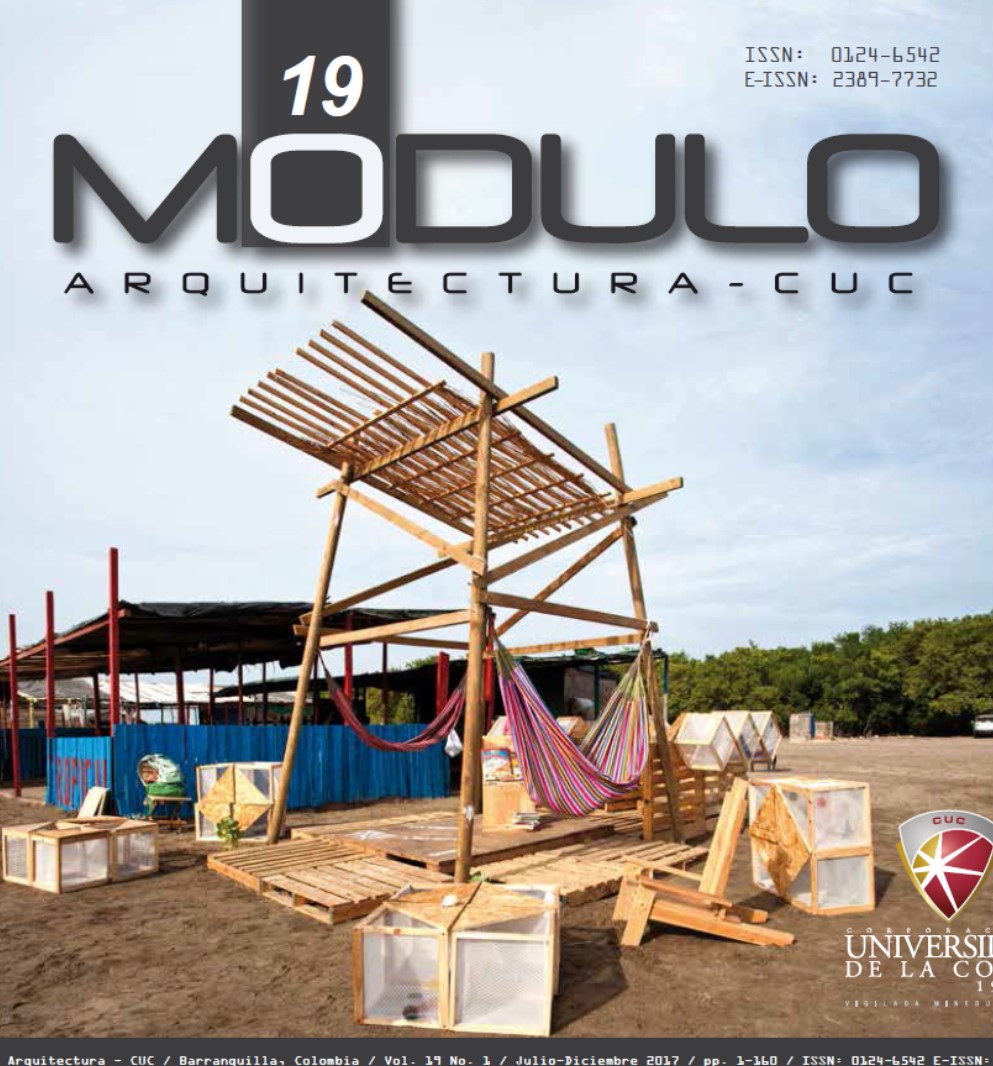Urban decor
Notes of round trip on Art, Public Space and quality urban environments
DOI:
https://doi.org/10.17981/moducuc.19.1.2017.01Keywords:
Keywords: Decoro Urbano, Public space, City image, Public art, Civic art, Civic design., Decoro, Decoro Urbano, Public space, City image, Public art, Civic designAbstract
Since the Renaissance, making a beautiful city is a recurrent issue in Western urban theory and practice. Against the background of this problem can be located the great theme of urban decorum, “the ‘adjustment’ of the means expressible to expressed content” (Tafuri, 1968 ). The classical writers declared the main ideas for an organized and beautiful urban environment. Another manifestation of these ideas was the monumental use of sculpture in public places by placing a statue or an obelisk in the center of a plaza, a tradition that was widely adopted after the sixteenth century.Downloads
References
Abreu, J. (2006). Escultura Pública e Monumentalidade em Portugal (1948-1998). [Tesis]. Unviersi -
dade Nova de Lisboa, Lisboa. Recuperado de https://run.unl.pt/ bitstream/10362/31390/1/Escultura_ Publica_e_Monumentalidade_em_P. pdf
Alberti, L. (1992). De Re Aedificatoria (1452). Edición española a cargo de Javier Fresnillo. Madrid: Ed. Akal.
Beaudoin, S. (2003). A Social Laboratory for Modern France: The Musee Social and the Rise of the Welfare State. J.
Soc. Hist. 37, 560–562. https://doi. org/10.1353/jsh.2003.0166
Bonnier, L. (1917). Pourquoi nous ouvrons une Ecole d’Art Public? L’Art Public, 1(1). 18. Bourdieu, P. (1988). La distinción. Criterio y bases sociales del gusto. Madrid: Taurus.
Broerman, E. (1898). Historique de Lœuvre de l’art public. In, A. Benard, Oeuvre de l’Art Public. Premier Congrés International. Bruxellles, Belgique.
Buls, C. (1893). Esthétique des villes. Brussels: Bruylant-Christophe & Cie. Cerdà, I. (1867). Teoría general de la
urbanización y aplicación de sus principios y doctrinas a la reforma y ensanche de Bacelona. Madrid: Imprenta Española.
Cerdà, I. (1991). Teoría de la construcción de las ciudades: Cerdà y Barcelona. En: Teoría de la construcción de las
ciudades aplicada al proyecto de Reforma y Ensanche de Barcelona (1859). Madrid, Barcelona: Ministerio para las Administraciones Públicas, Secretaría General Técnica, Ajuntament de Barcelona.
Choay, F. (1998). Dictionnaire de l’Urbanisme et de l’aménagement. París: Presses universitaires de France.
Consejo Europeo de Urbanistas-CEU. (1998). Nueva Carta de Atenas. Atenas: CEU. Recuperado de http://www. unesco.org/culture/natlaws/media/pdf/ guatemala/guatemala_nueva_carta_ atenas_1998_spa_orof.pdf
Crouch, Ch, (1915). Design Culture in Liverpool 1880-1914. The Origins of the Liverpool School of Architecture, 2002nd ed. Liverpool: Liverpool University Press.
Engels, F. (1845). La situación de la clase obrera en Inglaterra. Buenos Aires: Editorial Futuro.
Fiol, C. (2008). Retícules i diagonals el Pla Jaussely de Barcelona de 1907 i el Pla Burnham de Chicago de 1909. [Tesis].Universitat Politècnica de Catalunya, Barcelona. Recuperado de https://upcommons.upc.edu/ handle/2117/94281
Gaston, (2014). Decorum (Grove Dictionary of Art). In, The rhetoric of art: Varietas, empathy and decorum. Recuperado de http://www2.idehist.uu.se/distans/ ilmh/Ren/password-decorum.htm
Giedion, S. (1952). Historical Background to the Core. J., Tyrwhitt, J., Sert & E., Rogers (Eds.). The Heart of the City.
Towards the Humanisation of Urban Life. (17–25). London: Lund Humphries & Co Ltd.
Haddad, M. (2017). The Eventrement of Paris and the configuration of the Alphand-Davioud-Hittorff Paradigm on urban design. On the w@terfront, 51(1). 25–49.
Harvey, D. (2003). Paris, Capital ofModernity. New york: Routledge. Hegemann, W. & Peets, E. (1922). The American Vitruvius: An Architect’s Handbook of Civic Art. New York: Architectural Book Publishing Co.
Kahn, A. (2002). Practices, Pedagogies, Premises. In, Van Allen Institute, Urban design now 12. Van Allen Institute, New York.
Kohane, P., & Hill, M. (2001). The eclipse of a commonplace idea: decorum in architectural theory. Arq Archit. Res.
Q. 5(1), 63–77. https://doi.org/10.1017/ S1359135501001105
Mandanipour, A. (2007).Designing the City of Reason. Foundations an Frameworks. New york-london: Routledge.
Martí, J. (1889). La Exposición de París. La Habana: Centro de Estudios Martinianos.
Martorell, G. (1911). La Urbanisación moderna. La Ilustració Catalana 2o época, 10–12.
Monclús, F. (1995). Arte Urbano y Estudios Histórico-Urbanísticos, 3ZU. Tradiciones, ciclos y recuperaciones. Revista de Arquitectura (ETSABAmbit), 4. 92-101.
Olsen, D. (1986). The City as a Work of Art. London-Paris-Viena: Yale University Press. Proudhom, P-J. (1865). Du principe de l’art el de la destination sociale. Paris: Garnier.
Puig, J. (1900). Barcelona d’anys á venir I. La Veu de Catalunya, 1, 1.
Puig, J. (1901a). Barcelona d’anys á venir II. La Veu de Catalunya, 2, 1.
Puig, J. (1901b). Barcelona d’anys a venir III i últim. La Veu de Catalunya, 2, 1.
Quatremère, A-Ch. (1788). Encyclopédie méthodique: Architecture, AntoineChrysostome Quatremère de Quincy.
Paris: chez Panckoucke libraire.
Remesar, A. (2007). O “estilo AlphandDavioud- Hittorf” de mobiliário urbano nos centros históricos. O journal
negócios do mercado das cidades, 28(1). 8–9.
Remesar, A. y Ríos, M. (2018). Barcelona s. XVIII, un paisatge en construcció. On the w@terfront, 60(1). 9–77.
Ríos, M. (2017). ¿Hacer Ciudad? Barcelona, la construcción del paisaje, 1929 -1973 [Doctoral]. Universitat de Barcelona, Barcelona
Robinson, Ch. (1904). Modern civic art or The city made beautiful. New York: Putnam and Son.
Rucabado, R. (1911). Un barrio gótico en Barcelona. La Cataluña, 189(1). 309–311.
Sabaté, J. (1999). El proyecto de la calle sin nombre. Los reglamentos urbanos de la edificación ParísBarcelona. Barcelona: Fundación Caja de Arquitectos.
Sert, J. (1957). The Human Scale. Key to the measure of cities. In, E., Mumford, (Ed.), The Writings of Josep Lluís
Sert. (185). Yale University PressHarvard Graduate School of Design, New Have and London, Cambridge (Mass).
Sitte, C. (1889). City Planning According to Artistic Principles. London: Phaidon Press
Tafuri, M. (1968). Teoria e Storia dell’ architettura. Roma: Laterza. Veblen, T. (1899). The Theory of the Leisure Class An Economic Study of Institutions. México, D.F.: Fondo de Cultura Económica.
Veblen, T. (1899). The Theory of the Leisure Class An Economic Study of Institutions. México, D.F.: Fondo de Cultura Económica.
Downloads
Published
How to Cite
Issue
Section
License
Copyright (c) 2017 Antoni Remesar Betlloch

This work is licensed under a Creative Commons Attribution-NonCommercial-NoDerivatives 4.0 International License.
CC Reconocimiento-NoComercial-SinObrasDerivadas 4.0



 English
English
 Español (España)
Español (España)






